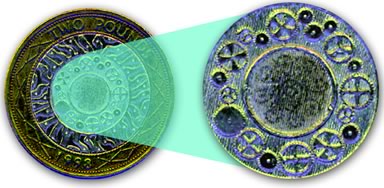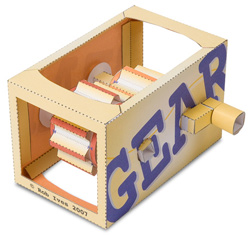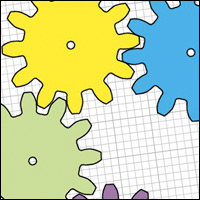Gears are used to change speed in rotational movement and to move rotation from one place to another. In the example below the brown gear has twenty teeth and the light brown gear has eight teeth and the grey gear has twelve teeth. As the brown gear turns one turn the light brown gear turns 20/8 or 2 1/2 turns. The light brown gear turns 20/12 or 1 2/3 turns.
Notice that as the brown gear turns clockwise the other two gears turns anti-clockwise.
No iFrame ‘;
print ‘
Using HTML 5 ‘;
}
else{
print’
‘;
print ‘
Using Flash’;
}
?>
Rings of Gears and the Two Pound Coin
Gears turn in alternate directions. In the example below the ring of gears contain an even number of gears and turns freely, as you can see, but imagine a ring with an odd number of gears , image that one of the gears is removed, you will see that the two adjacent gears be turning the same direction and so would not be able to turn, the gears would lock together.
Now, look at the ring of gears around the centre
of the British two pound coin. Nineteen gears…!

No iFrame ‘;
print ‘
Using HTML 5 ‘;
}
else{
print’
‘;
print ‘
Using Flash’;
}
?>
Check out the gears model to download and make in the shop!
This mechanism is now featured on the upcoming updated mechanisms page (beta)


